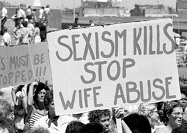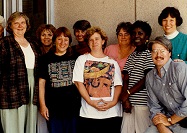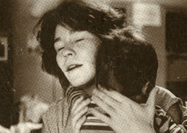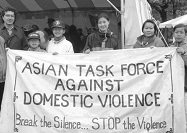- Introduction

- Generations of Reformers

- Nurses Take A Stand

- Medicine Confronts Violence

- Change Is Possible

- And the Work Continues

EXPLORE
Select one of the topics from above.
Introduction
Activists and reformers in the United States have long recognized the harm of domestic violence and sought to improve the lives of women who were battered.
During the late 20th century, nurses took up the call. With passion and persistence they worked to reform a medical profession that overwhelmingly failed to acknowledge violence against women as a serious health issue. Beginning in the late 1970s, nurses were in the vanguard as they pushed the larger medical community to identify victims, adequately respond to their needs, and work towards the prevention of domestic violence. This is their story.
Continue to Introduction
Generations of Reformers
Temperance and women’s rights advocates called attention to family violence and agitated for reform during the mid-19th century. Despite their efforts, society as a whole continued to ignore domestic violence.
The most dramatic changes came over a century later. In the mid-1970s, grassroots feminist activists and survivors of domestic violence organized the battered women’s movement. Using the slogan “we will not be beaten,” they exposed the prevalence of violence in women’s lives, provided shelter and support, and advocated for widespread changes.
Feminist agitation spawned significant reform in law, social services, and, eventually, medicine.
Continue to Generations of Reformers
Nurses Take A Stand
Nurses were among the first to identify women who were battered as a population with specific health needs that were largely neglected by the medical community.
Through both their research and practice, nurses saw firsthand the epidemic of violence in women’s lives. In response, they prioritized improvements in the medical attention and treatment for women who were battered.
Whether in nursing school or working in emergency rooms, nurses were in a unique position to recognize and address domestic violence as a pressing health crisis for millions of women.
Continue to Nurses Take A Stand
Medicine Confronts Violence
Nurses successfully began to change the medical profession as they advocated, educated, and organized nationally.
Based on their research and experience, nurses and their allies created and implemented some of the first hospital protocols for treating women who were battered. Using these protocols, medical practitioners learned how to identify, properly treat, and provide support and resources to this population.
Following suit, in the mid-1980s, the public health community identified domestic violence as a priority health issue. This recognition marked a significant step toward the reform of the medical and health professions in treating victims of domestic violence.
Continue to Medicine Confronts Violence
Change Is Possible
Nurses changed the way the medical profession identified and treated women who were battered. By the 1990s, all the major medical organizations recognized domestic violence as a significant health issue and urged their members to take action, reinforcing over a decade of advocacy by nurses and their allies.
While these reforms were significant and helped to save and improve lives, the work of ending violence in American homes continues to this day. As individuals and community members, we all have a part to play in confronting violence and improving women’s lives. Together we can make a difference.
Continue to Change Is Possible
And the Work Continues
Activists today continue to work tirelessly to support and empower victims of intimate partner violence. Individuals and organizations have developed innovative and creative approaches to sharing information and assisting in recovery. In the past ten years, there has been an increased focus on the specific needs of teens, immigrant women, women of color, as well as the role of men in stopping violence.
Continue to And the Work Continues

